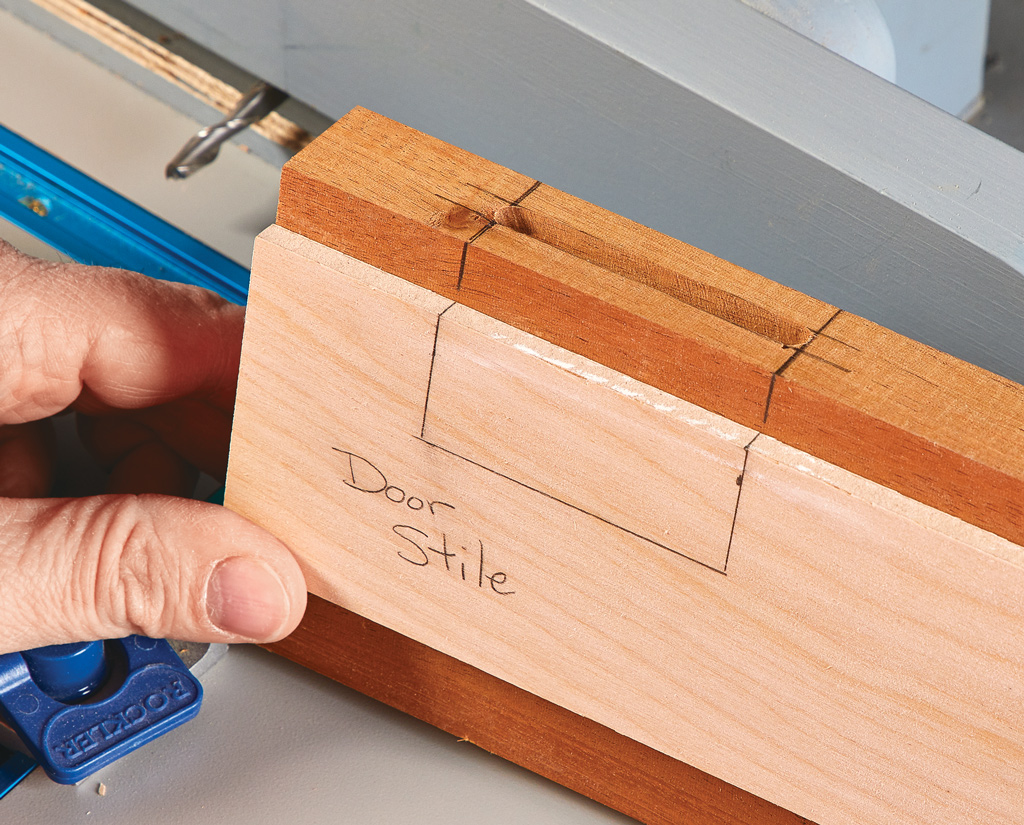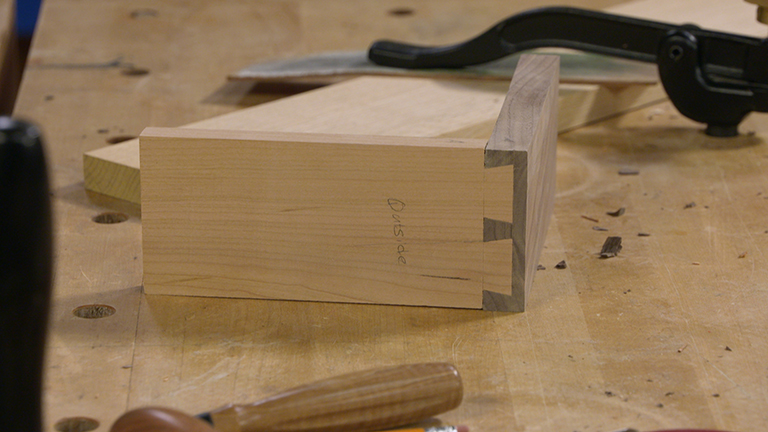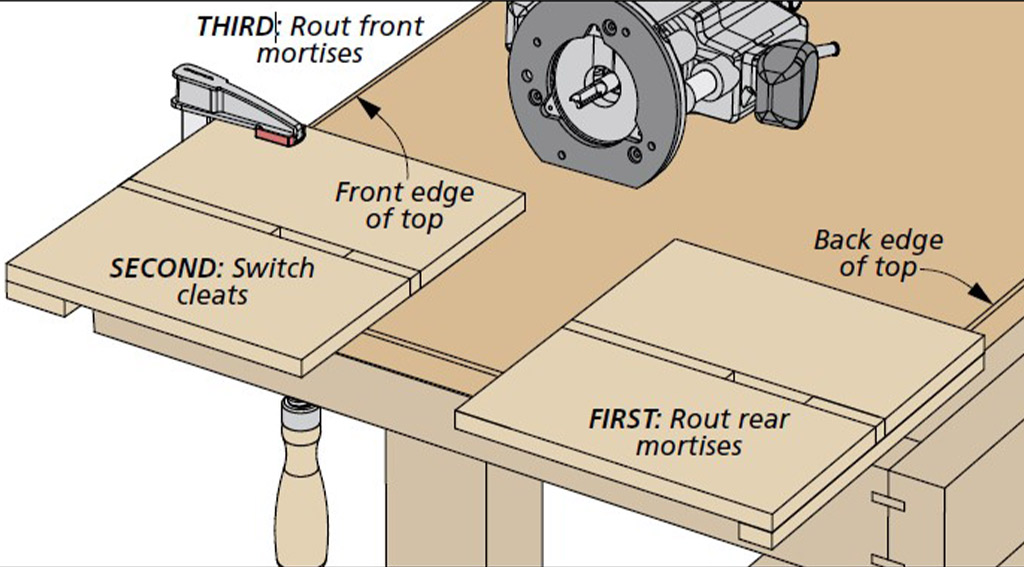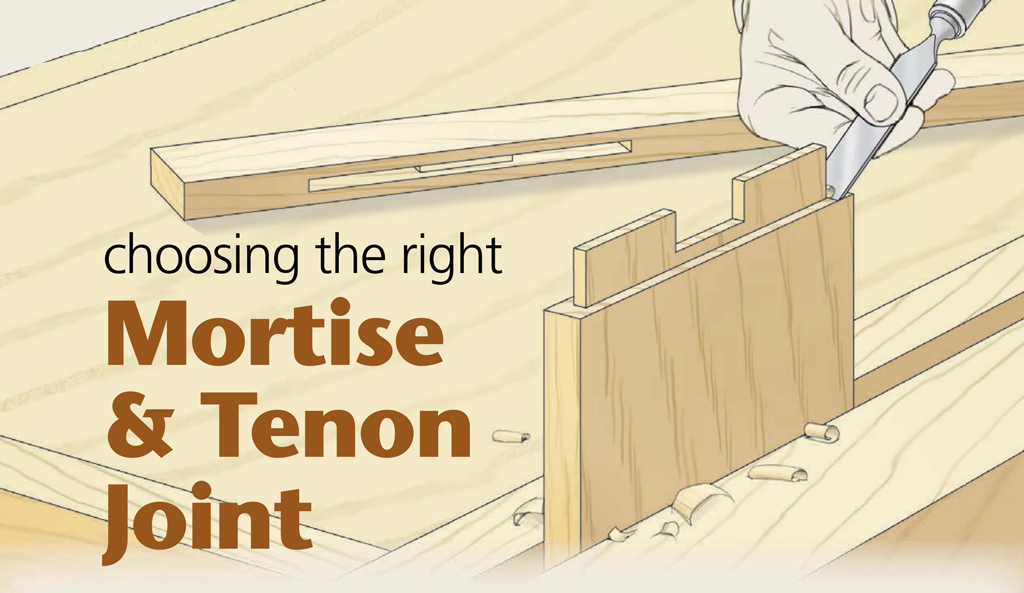
You may have heard it said that the mortise and tenon is the fundamental joint in woodworking. And although you can easily make an argument to back up this statement, it might be a bit simplistic. The mortise and tenon isn't just one joint but a whole family of joints. There are certainly a dozen or more variations of the mortise and tenon that are each designed to fit a particular structural or aesthetic need. The benefit for woodworkers is that the mortise and tenon offers a real joinery bonanza. The catch is that when designing and building a project, you have to decide which type of mortise and tenon is the best choice for meeting a particular goal. But this doesn't have to be a difficult decision. One of a handful of common variations of the mortise and tenon will fill the need on almost any project. When you familiarize yourself with the strengths of each type, you'll be able to call on the right joint.
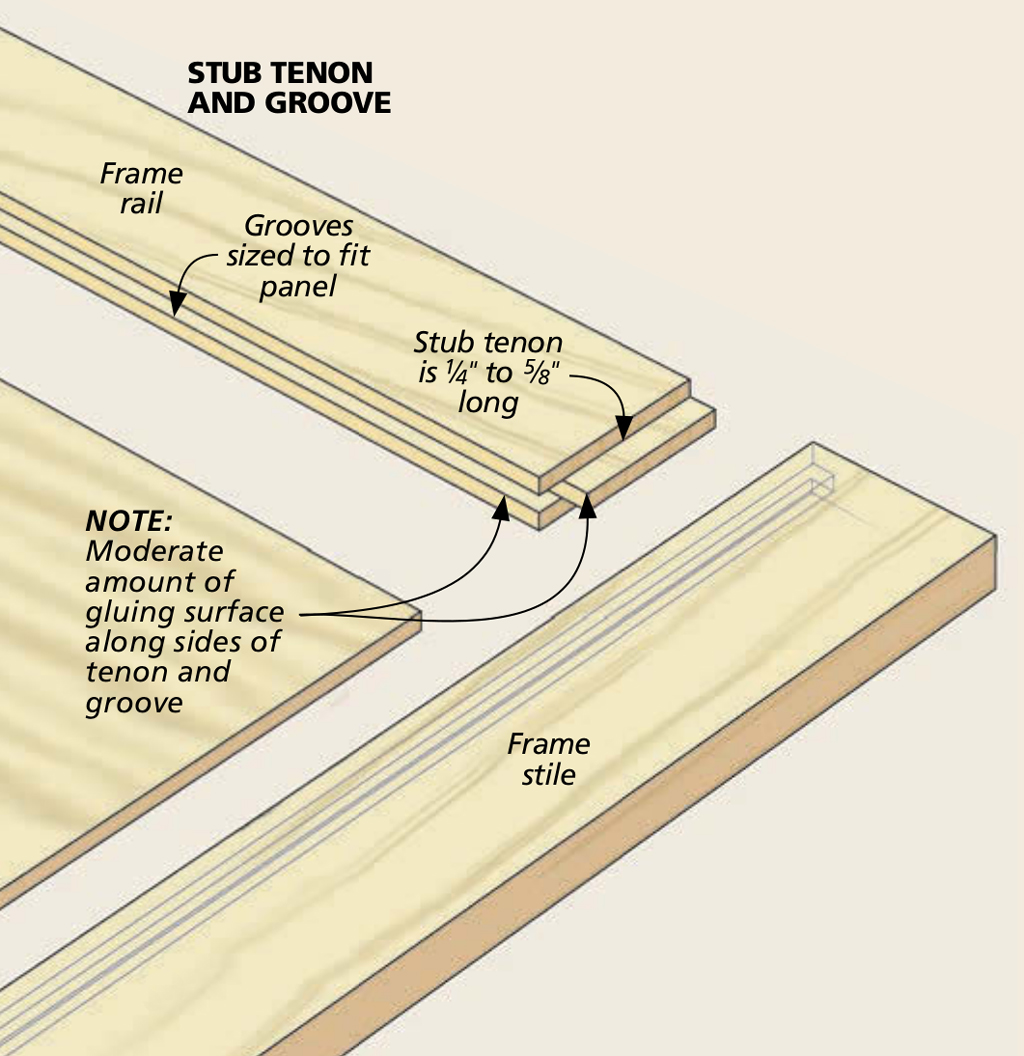
STUB TENON & GROOVE. The simplest form of mortise and tenon is shown above. Termed a stub tenon and groove, this joint is made by fitting a short tenon (usually no longer than 5/8") into a continuous groove. This joint has the advantage of being easy to cut and is often used to make cabinet doors and other light-duty frame and panel assemblies. It offers a fair amount of gluing surface but the open ended, continuous groove has weak sides that can crack fairly easily if stressed. This weakness can be overcome by gluing a plywood panel into the grooves.

STANDARD MORTISE & TENON. When a deeper, fully enclosed mortise is cut to accept a longer tenon, you end up with a much stronger joint (drawing above). Since the sides of the mortise are supported by the wood on either end, the chance of splitting is much less likely. Greater gluing surface is another benefit. This is a good choice for joints that will be put under stress, such as a rail-to-leg or stretcher-toleg joint of a chair or table.
The tenon can be made with shoulders cut on all four edges, as shown, or just the two long edges. A two-shouldered tenon has the advantage of being easier and quicker to make. A four-shouldered tenon has greater racking resistance and ensures that any gaps between the ends of the mortise and the tenon will be hidden.

HAUNCHED MORTISE & TENON. When a tenon is cut back or notched along one edge, the resulting short stub is referred to as a haunch (drawing above). This type of mortise and tenon joint is commonly used in making heavy-duty frame and panel assemblies. The obvious benefit here is that the haunch fills the end of the groove.
A haunched tenon can also offer structural benefits. For example, when making a large table frame, a haunched tenon offers a slightly stronger choice for joining the rails to the legs. The mortise can be reduced in length and kept back from the end of the leg, reducing the likelihood of splitting. A shallow groove between the mortise and the end of the leg holds the haunch on the tenon. This arrangement creates a continuous gluing surface and also provides a mechanical connection that keeps the rail from twisting out of alignment.

THROUGH MORTISE & TENON. For heavy-duty, structural applications, a through mortise and tenon, as shown in the left drawing below, is often your best option. This traditional variation is designed to maximize the mechanical strength of the joint. A trestle base for a workbench or table, or a large door can benefit from the added rigidity a through tenon provides. Another advantage is that wedges can be inserted into the joint to lock it into the mortise.
A through tenon also offers aesthetic appeal and is often incorporated as a detail on Craftsman-style furniture. But note that since the joint is exposed, both the mortise and the tenon have to be cut and fit cleanly and accurately.

TWIN TENONS. Creating twin tenons or double tenons, as illustrated in the drawing above, is called for in pretty specific situations. When a "flat" rail is joined to a vertical piece, a single, wide mortise and tenon joint would provide only a small amount of long grain gluing surface along the edges of the tenon. In this instance, using two side-by-side mortises along with twin tenons essentially doubles the amount of long grain gluing surface in the joint.
Twin tenons are commonly used on solid-wood cases. The joint creates a strong connection between the dividing rails and sides.
SPLIT TENONS. Sometimes it's necessary to join a fairly wide rail (6" or more) to a stile or leg. But a long mortise fit with a wide tenon has a couple of weaknesses. First, when the tenon is glued rigidly into the mortise, wood movement is restricted and becomes an issue. This can cause the rail to crack or the joint to fail. Secondly, the long mortise can seriously weaken the rail. Spreading or splitting at the sides of the mortise is a possibility.
The solution is to divide the tenon into two sections. Two shorter mortises connected by a shallow groove will maintain the strength of the rail while separating the tenons allows a small amount of wood movement.
Basically, it all comes down to matching up the structural requirements with the right type of mortise and tenon. The reward is a joint that will last a lifetime.










